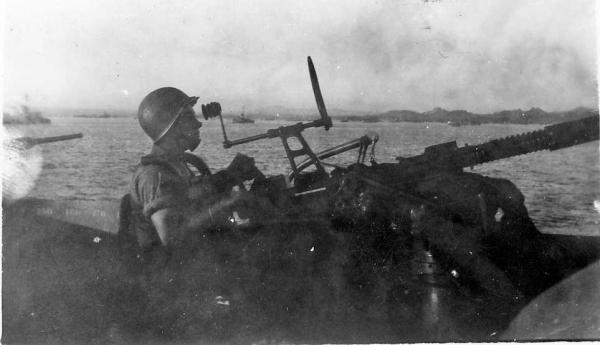He was only 17 years old when he was serving on the LCI 353 mortar ship in the South Pacific, during the invasion of Okinawa, in the Second World War. He said he did not know much about it at the time and that it felt that people in the conning tower above me, and they knew more than I did.”
He joined the Navy in 1944, in Dallas and he served on the 158-foot LCI(M) 353. The warship could fire 40mm anti-aircraft guns, 20mm anti-aircraft guns, mortars and a 50-caliber machine gun. Mercer became friends with the head signalman and asked him if he could somehow get up there where he was. 18 months later, he became a signalman and was so good at what he was doing that he was promoted to 3rd signalman, the equivalent to the rank of sergeant.
In February 1945, the LCI 353 became part of a massive fleet of warships at Ulithi atoll in the Caroline Islands, which was formed for the full invasion of Japan. Mercer said he had never seen so many ships in his entire life and that he never knew what it meant. “I just thought there were a lot of ships,” he said. He remembered how many tankers, aircraft carriers, destroyers and battle ships were there and how the United States moved almost everybody out and took over the whole island.
“We went from there to Leyte — they had just recaptured the northern end of the Philippines — and we invaded Okinawa out of the Philippines,” said Mercer. From that point, they were supposed to go into Japan, but that was when the bombing took place. At Okinawa, he learnt that 50 kamikaze missions had been operated during that battle. They hit many destroyers, including the Mississippi battleship, which was hit twice by suicide pilots that day, the Lubbock Avalanche-Journal reports.
One of the suicide planes went just over one of the destroyers and went straight for the 158-foot LCI(M) 353, skimming as low as the ship level. Mercer remembered seeing the sea water raising at the power of the plane’s props.
Since they were carrying a disabled and damaged ship alongside the LCI 353, the ship was only capable to fire two of the guns and that was the moment Mercer thought would be his last and that he was going to die.
However, he did survive the day and the war and returned home soon after. He married his wife Emma Lou in 1947.
